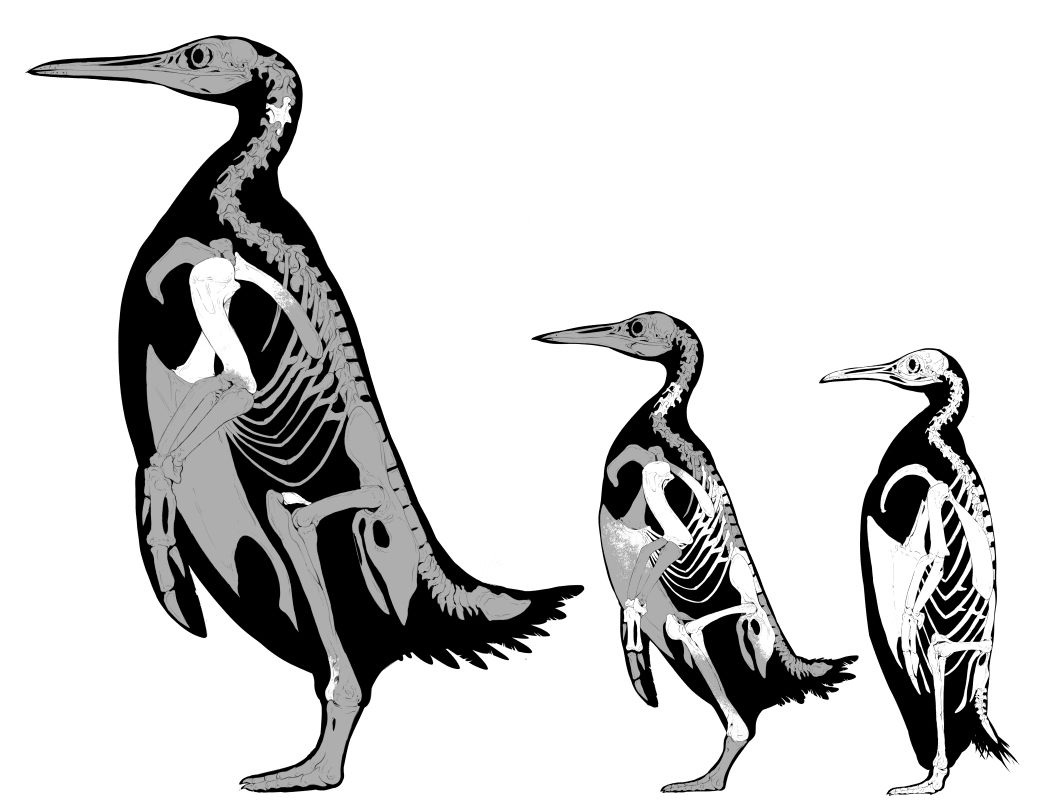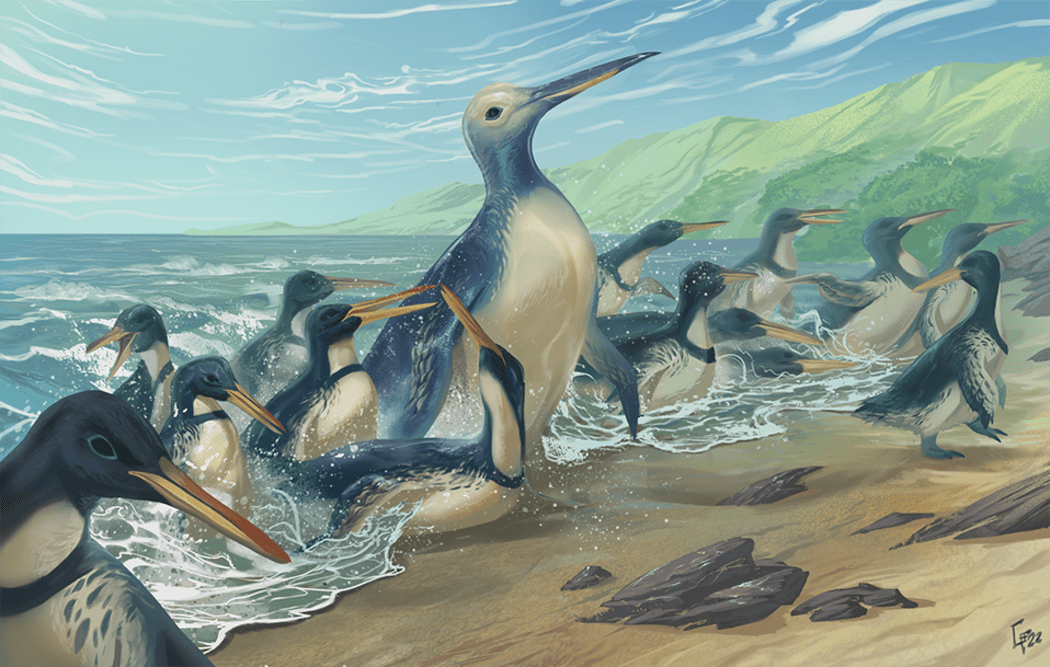How did penguins go from flying in the air to 'flying' underwater?
The story begins 62 million years ago, says Dr Daniel Thomas of Massey University.
“I recognise that that’s just a number, but to put that into context – at 66 million years, that is when the non-avian dinosaurs disappeared from the planet" he tells Our Changing World.

Dr Daniel Thomas is a vertebrate palaeontologist specialising in fossil penguins. Photo: Claire Concannon / RNZ
Follow Our Changing World on Apple Podcasts, Spotify, Stitcher, iHeartRADIO, Google Podcasts, RadioPublic or wherever you listen to your podcasts
Once a dinosaur-obsessed kid, Daniel continues to follow his passion, now with a focus on one of the descendants of avian dinosaurs.
He studies penguin fossils and their evolution across time.
The earliest penguin fossils come from right here in Aotearoa, from North Canterbury.
Dated to a mere four million years after the dinosaur extinction event – a blink of the eye in geological time – these bones indicate that early proto-penguins had already committed to life in water, although they may not have been very efficient divers.
Birds that fly in air – like the once-ancestor of the penguin – have hollow bones. But these early fossil bones from Canterbury are dense and better suited to diving underwater.
Across the next 6–13 million years, the wings of these birds underwent significant changes. No longer were they able to tuck back in after a stroke, instead the joints would stiffen so that they effectively became fixed paddles, driven by the shoulder.

Reconstructions of newly described fossil penguins (left: Kumimanu fordycei, middle: Petradyptes stonehousei) compared to a skeleton of the largest living penguin (right: emperor penguin Aptenodytes forsteri). Bones recovered for each species shown in white. Photo: Simone Giovanardi
And then there was one
Throughout the penguin fossil record, there is evidence of many different designs, including giant penguins. In fact, there are far more penguin species in the fossil record than modern species.
But only one made it through.
The most recent common ancestor of all modern penguins is believed to have existed about 14 or 15 million years ago.
That one ancestor has spawned the six genera (types) of penguins we have today. One of those types can only be found in the subantarctic islands and the South Island of Aotearoa.

Concept image of the giant extinct penguin Kumimanu fordycei towering over other extinct penguins that were closer in size to modern-day emperor penguins. Photo: Simone Giovanardi
To learn more:
-
Listen to the full episode on Our Changing World


